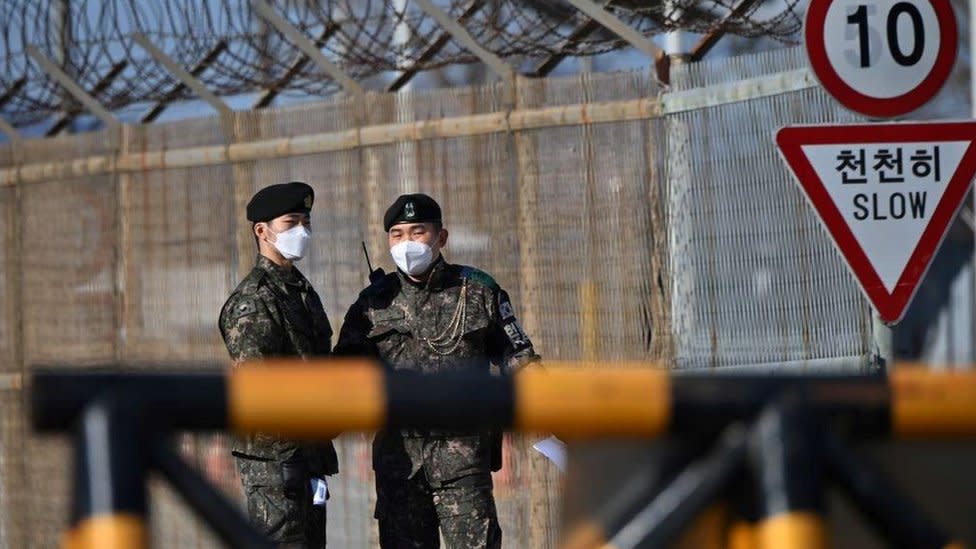
South Korean troops did not notice a North Korean man who crossed the heavily fortified border this month, although he has appeared on TV cameras eight times and set off alarms.
South Korea’s army said it would take this moment to make the necessary changes.
The man swam from the sea in a diving suit, walked 5 km and went undetected for three hours before the troops finally took action in his ninth TV appearance.
It is not clear why he made the crossing on such a dangerous route.
At one point, the man went through a drainage tunnel in the demilitarized zone (DMZ) that the South Korean military did not even know existed, reported the Yonhap news agency.
This despite the fact that the area is one of the most heavily fortified and dominated by sensors in the world.
What happened on the trip?
The latest details came from a report by the South Korean Joint Chiefs of Staff (JCS) on security breaches on February 16. The JCS declined to identify the man and is investigating whether he was trying to desert.
It is not known where his journey began, but he landed in a wetsuit and fins at 1:05 am, near a South Korean observatory, north of the eastern border city of Goseong.

He hid his suit and fins under a rock and then followed the barbed wire fences south along the beach.
He then entered the drainage tunnel and crossed over to the DMZ.
The man then moved along a road undetected for more than 5 km (three miles) until 4:16 am.
His ninth appearance on a CCTV camera at this point prompted troops to report his presence.
The military found him at 07:27. The report said that he was looking for civilians to surrender, as he feared that soldiers could return him to the North.
What were the security flaws?
Surveillance cameras spotted the man several times between 1:05 am and 1:38 am, with alarms going off twice. No action was taken.
Military CCTVs caught the man three more times around 4 am.
A JCS official told Yonhap that the soldier in charge of coastal surveillance equipment was making adjustments at the time and thought the alarms were a system error.
Some questioned whether the man, a civilian who worked in the fishing industry, had swum from North Korea as claimed due to the cold winter conditions. It was speculated that he could have been part of the boat trip.
However, JCS said he believed the man had swam, saying his wetsuit was in good condition and that the tide would have helped.
This is the second time in four months that security issues have been raised at the DMZ.
After a former gymnast defected last November by jumping over the border, South Korea’s military announced they would check all sensors.
The last event generated an inquiry to the 22nd Division, responsible for that area of DMZ.
Are defections frequent?
Since taking power in 2011, North Korean leader Kim Jong-un is believed to have ordered increased border controls between the two sides and with China, including the installation of more landmines.
But about 1,000 people defect from North Korea each year, fleeing a repressive state that faces numerous accusations of human rights abuses.
Most North Koreans flee across the border with China, where they risk being sent back to the North.
Crossing the DMZ is dangerous. If detected and arrested by the North Korean military, those trying to cross will certainly be taken to a detention center for interrogation. They can be tried and sentenced to long terms in forced labor camps.
The border and its fortifications have existed since the Korean War ended in an armistice in 1953. North and South Korea are technically at war, as the fight did not end with a peace treaty.

